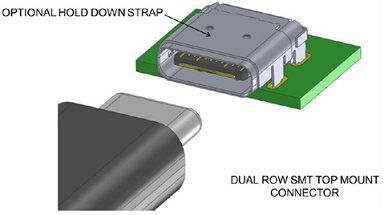
As exciting as USB Type-C may be, there will be an indefinite yet assuredly lengthy, crossover period from legacy USB to USB Type-C, even as adoption of Type-C for new system designs accelerates. This, combined with the higher current and power levels available across the new connection, makes backward compatibility and clear identification of cables, a critical aspect of implementation.
Of course, minimizing “consumer confusion” is also critical, even though users will undoubtedly appreciate the bi-directional, reversible design, among the many other features of the new connector, as discussed previously:
• Microchip UTC2000 controller adds to USB Type-C fire
• USB Type-C Power and Power Delivery (PD)
• USB Type-C connector pins and signal plan
Advertisement

Learn more about Electronic Products Magazine





